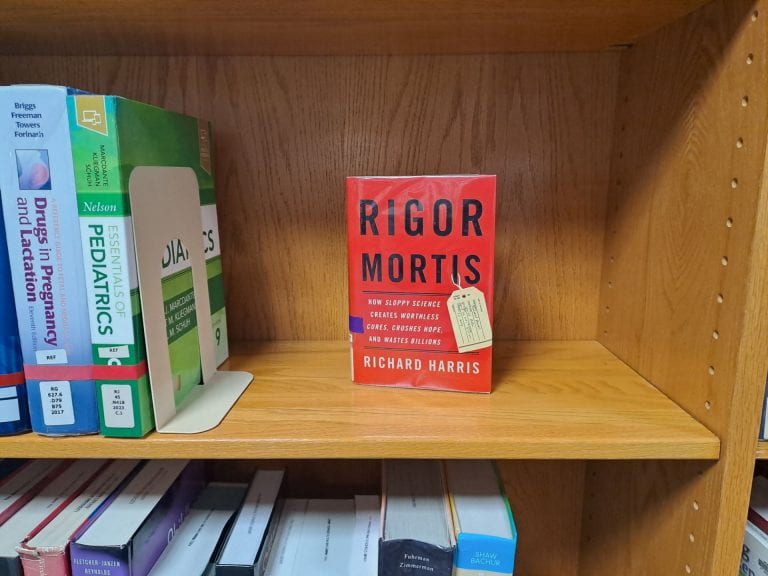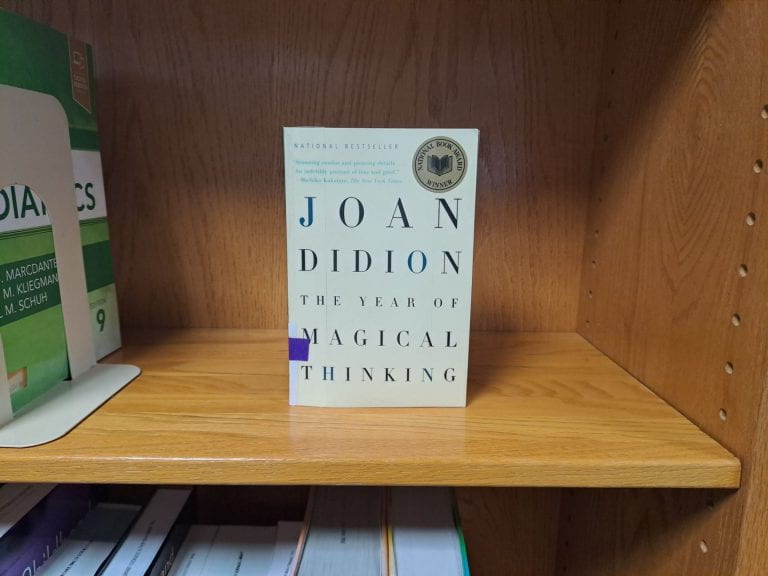
As Pride Month 2024 draws to a close, we want to take this opportunity to look back at some of our favorite LGBTQ+ blog posts. Whether you’re new to Himmelfarb Library or have been following our blog for years, this retrospective look at Himmelfarb’s Pride posts can serve as an opportunity to reflect on the history of Pride, celebrate the progress that’s been made towards LGBTQ+ equality and those who have fought for this progress, and recommit to the work that still needs to be done.
LGBTQ+ History
Most people don’t associate October with Pride Month, but October is LGBTQ History Month. In an October 2023 post titled The History Behind LGBTQ History Month, we took a look at the history behind LGBTQ History Month starting from its origins in 1994 when high school history teacher, Rodney Wilson addressed a lack of LGBTQ representation in school curriculum and worked with organizations such as the Human Rights Campain to have LGBTQ History Month recognized at the national level. October has additional significance within the LGBTQ community as the first March on Washington for Lesbian and Gay Rights took place in October of 1979, and a second March on Washington took place on October 11, 1987. In 1988, October 11th was recognized as National Coming Out Day. If you’d like to learn more about the 1979 and 1987 March on Washington for Lesbian and Gay Rights, read the full post!
LGBTQ+ Profiles
At GW, we are lucky to have many influential members of the LGBTQ+ community who have been members of our faculty for many years! We’ve profiled some prominent GW faculty and one prominent national figure on our blog.

In June 2021, we posted a piece titled “Just Speak:” Lawrence “Bopper” Deyton. This in-depth profile of Dr. Deyton explores an influential experience Dr. Deyton had as a patient that would have a profound impact on the course of his career and inspire him to work to be a positive influence for change within the field of medicine and healthcare for his entire career. In 1978, Dr. Deyton co-founded what is now Whitman-Walker Health as “a health clinic for gay men and lesbians before AIDS redefined everything and the clinic became a hub for HIV treatment” (Sullivan, 2011). After attending medical school at GW and completing his residency at the University of Southern California Los Angeles County Medical Center, Dr. Deyton began working at the NIH, where he became friends with Dr. Anthony Fauci, and together they would play a crucial role in HIV/AIDS research during the early 1990s epidemic. Dr. Deyton was instrumental in overseeing the “clinical research on the development and approval of antiretroviral drugs and treatment strategies, including the first trials of combination therapies, the cornerstone of current HIV treatments” (GW SMHS, 2017). Read the full post to learn more about Dr. Deyton’s fascinating and impactful career!

In September of 2021, we posted a profile titled Dr. Carlos Rodriguez-Diaz: Aim for What You’re Passionate About. In this post, Dr. Rodriguez-Diaz discusses what inspired him to go into public health and get involved with HIV care and prevention. He discusses the privilege of being a “young Latino gay man and to have access to education and contribute to my community by engaging in public health training, practice, and research” (Puro, 2021).
Dr. Rodriguez-Diaz talks about how he ended up at GW, what lessons scientists can learn from the spread of misinformation related to the COVID-19 vaccine, and how to make research more transparent and accessible. Included in his answer, he explains that “we should facilitate those scientists from minority populations (e.g. Latinos, Black, LGBTQ, Native Americans) to have access to mass media and platforms to reach out to their communities. No one else can speak to a community like a community member” (Puro, 2021). Read the full article to learn more about Dr. Rodriguez-Diaz.
In June of 2021, our post titled PRIDE: Dr. Rachel Levine: Physician and LGBTQ+ Health Advocate profiled Dr. Rachel Levine, the first openly transgender woman to be confirmed for federal office by the United States Senate in 2021. Dr. Levine is still serving as the 17th Assistant Secretary for Health (ASH) at the Department of Health and Human Services. Dr. Levine served as the Pennslyvania Physician General from 2015 to 2018, during which time she was responsible for an initiative that allowed law enforcement agents to carry Naloxone, an anti-overdose drug, and also allowed Pennsylvanians to purchase Naloxone from a pharmacy without a prescription. Levine has used her platform to highlight health inequality issues impacting marginalized communities, including the LGBTQ+ community. In a 2020 interview with Philadelphia magazine, Dr. Levine said “One of my goals, being a state health official…is that people will see me. … it’s about letting people put a face to something they might not understand, so they aren’t fearful, so that they don’t get angry, so that it doesn’t lead to hate.”
Resources
We’ve also posted about LGBTQ+ resources and local organizations. A 2023 post titled Celebrate Pride: LGBTQ+ Healthcare Resources highlighted selected books, journals, and streaming videos that are part of Himmelfarb’s collection. A more recent post from earlier this month titled Pride in the Collection shared more books from our Diversity and Disparities in Health Care collection relevant to the LGBTQ+ community.
References:
George Washington University School of Medicine & Health Sciences. (June, 12, 2017). Lawrence “Bopper” Deyton installed as Murdock Head Professor of Medicine and Health Policy. SMHS News. https://smhs.gwu.edu/news/lawrence-%E2%80%9Cbopper%E2%80%9D-deyton-installed-murdock-head-professor-medicine-and-health-policy
Puro, A. (2021, September 29). Dr. Carlos Rodriguez-Diaz: Aim for what you’re passionate about. Himmelfarb Library Blog. https://blogs.gwu.edu/himmelfarb/2021/09/29/dr-carlos-rodriguez-diaz-aim-for-what-youre-passionate-about/
Sullivan, P. (2011, September 7). Lawrence Deyton, award nominee, heads FDA campaign against smoking. The Washington Post, https://go.openathens.net/redirector/gwu.edu?url=https%3A%2F%2Fwww.washingtonpost.com%2Flocal%2Flawrence-deyton-award-nominee-heads-fda-campaign-against-smoking%2F2011%2F08%2F15%2FgIQABsMYAK_story.html

















